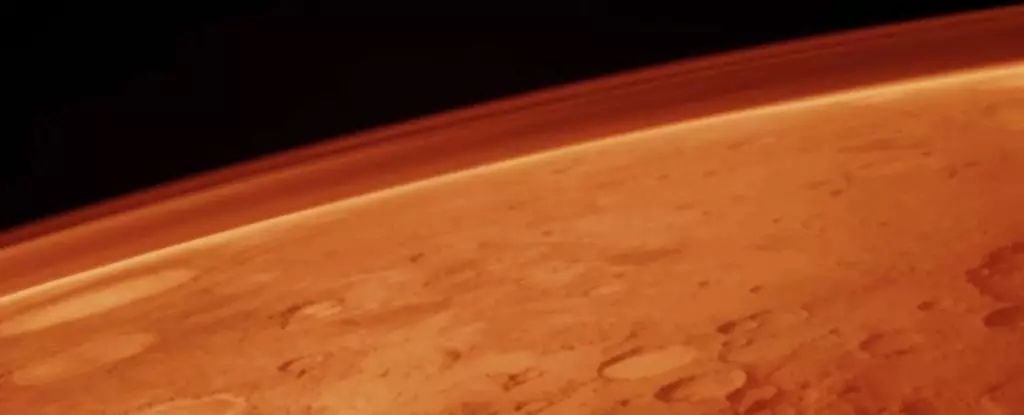The dream of colonizing Mars has captured human imagination for generations. It is a vision intertwined with hope, ambition, and the relentless pursuit of innovation. However, the romanticized concepts presented in science fiction, like those articulated in Kim Stanley Robinson’s Mars Trilogy, often overshadow the stark and unyielding truths of planetary science. As we glean insights from recent scientific studies, such as the one presented by Dr. Leszek Czechowski at the 56th Lunar and Planetary Science Conference, the complexities involved in transforming Mars into a habitable environment reveal much about our current capabilities and the sheer audacity of our aspirations.
The Science Behind Terraforming: A Tough Reality Check
Dr. Czechowski’s paper delves deep into the fundamental physics that must be addressed when contemplating the terraforming of Mars. Significantly, he highlights the dramatic difference in atmospheric pressure between Mars and Earth. Currently, Mars has such low atmospheric pressure that water would boil away at human body temperature. This harsh reality necessitates the wearing of pressure suits for any would-be Martian inhabitants, a somber reminder that there is no easy pathway to creating Earth-like conditions. The most promising region for increasing pressure, Hellas Planitia, offers only tepid hope – sitting at roughly 1/100th of Earth’s sea level pressure. Even here, one must grapple with the logistics of enhancing atmospheric density.
The implications are staggering. To make Mars hospitable for human life, we would need to create an atmosphere with a density akin to that of Earth. Dr. Czechowski’s analysis estimates that this would entail transporting vast quantities of atmospheric gas to the Red Planet, an endeavor that tests the limits of our energy resources and engineering ingenuity.
Gathering the Materials: An Outer Solar System Quest
Dr. Czechowski’s research surmises that the primary source for atmospheric materials would be the Kuiper Belt, where icy bodies abound. This area holds promise, but it’s also fraught with challenges. The asteroids closer to Mars are too deficient in essential gases like water and nitrogen. Thus, the focus shifts to the far-reaching Oort Cloud, a largely theoretical region brimming with icy bodies that could provide ample resources. Yet, transporting these objects significantly complicates matters, with projections indicating that it could take 15,000 years to redirect a body from the Oort Cloud effectively.
While the Kuiper Belt offers a more immediate option, the unpredictable nature of these objects poses further risks. The potential for fragmentation as they near the Sun raises the specter of wasted resources – an unwanted consequence of our efforts. Historically, this region has provided tantalizing glimpses of the potential for harnessing celestial mechanics, but the truth is far more intricate than even the most optimistic visionary might anticipate.
The Energy Challenge: Propulsion Systems and Technology
When discussing how to transport large icy bodies to Mars, one must consider the energy required for such a monumental task. Dr. Czechowski suggests the utilization of a fusion reactor to power an ion engine for placing these bodies on the correct trajectory. While compelling, this proposal lacks detailed feasibility assessments, raising questions about the current state of technology. The engineering challenges are not just theoretical; they demand innovation beyond our present capabilities.
The notion of terraforming may invoke images of rapid, sweeping changes to a barren landscape, yet the truth suggests that the timeline necessary could span millennia. If we are to succeed in this monumental goal, the world will need a concerted scientific effort that transcends mere concept; it requires an expansive vision matched by the realities of our technological landscape.
The Pursuit of a Dream: Ambitious Yet Energetically Costly
Despite the seemingly insurmountable challenges presented in the pursuit of terraforming Mars, the optimism surrounding this grand vision remains unabated. Enthusiasts are likely to press onward, dreaming of a day when Mars might host human civilizations. However, the scientific community must take heed of the need for grounded pragmatism when discussing such grand endeavors.
Various alternate methods may exist for transforming the Martian landscape, including bioengineering and other innovative strategies. Yet, these too come with significant energy costs and technological hurdles. As the path toward a terraformed Mars unfolds, those involved will need to balance dreams with scientific reality.
The call to explore Mars is an echo of humanity’s relentless desire to push beyond our terrestrial boundaries, yet the road to a viable, habitable Mars is riddled with challenges that should temper expectation. As we continue our journey into space, the path may remain obscured by uncertainty, but perhaps, therein lies the beauty of exploration itself. The dream may one day become a reality, but it will require more than just ambition—it will demand the full weight of human ingenuity in the quest for sustainable life beyond Earth.


Leave a Reply